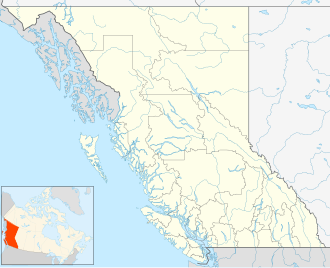| Atna River Provincial Park | |
|---|---|
 | |
| Location | British Columbia |
| Coordinates | 53°58′29″N127°54′29″W / 53.97472°N 127.90806°W |
| Area | 21,092 ha (81.44 sq mi) |
| Established | July 11, 2008 |
| Website | https://bcparks.ca/atna-river-park |
 | |
Atna River Provincial Park is a park located in Skeena District, British Columbia, Canada. It is named for the Atna River, which flows through the park. [1] It was first established on July 11, 2008, as a product of the Morice Land and Resource Management Plan. It contains the Morice, Kemano, Dala and Kildala rivers. It is the traditional territory of the Wet'suwet'en people. [2] [3]
